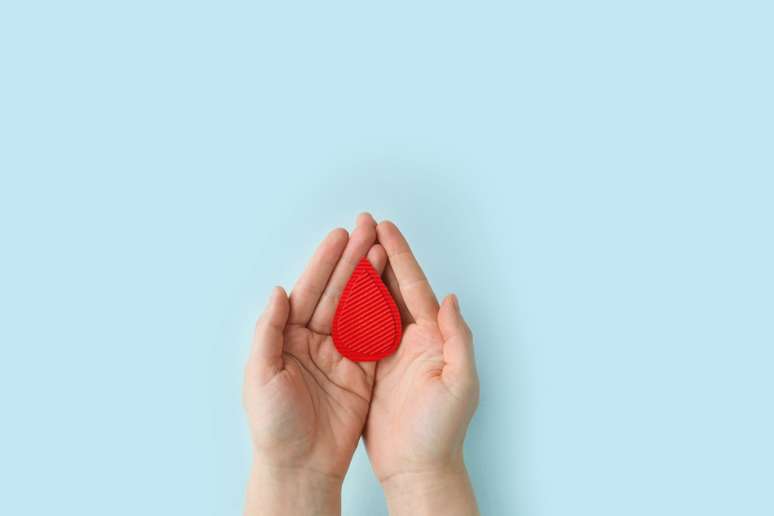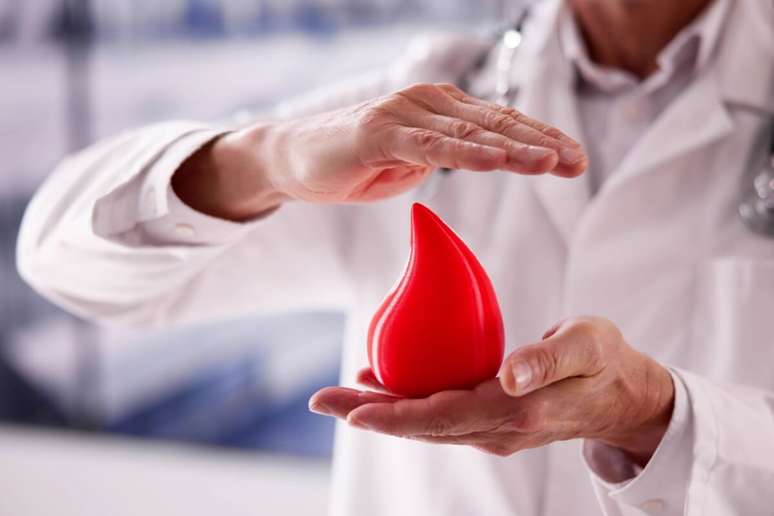The doctor clarifies issues related to diseases that affect blood clotting
Hemophilia is an inherited genetic condition that affects one in 10,000 births, including a significant portion of the Brazilian population. Brazil has the fourth largest population of hemophiliacs in the world, with 36.1% of patients suffering from the most severe form of this disease, according to information from the World Hemophilia Federation.
While, for most, bleeding after injury is naturally controlled by the blood’s clotting system, for individuals with hemophilia, this process is impaired, resulting in persistent bleeding. These, in turn, can affect various organs and cause intense pain, as well as serious complications, such as loss of mobility.
On World Haemophilia Day, it is essential to raise awareness of this condition and demystify the misinformation circulating about it. Dr. Priscilla Mattar, Vice President of Medical at Novo Nordisk, clarifies some of the most common myths and truths related to hemophilia. Watch!
1. Hemophilia is exclusively a disease of genetic origin
Myth. There are two types of hemophilia: congenital and acquired. Congenital is caused by a genetic alteration linked to the X chromosome and transmitted from women to their children. Hemophilia A accounts for 80% of cases and occurs due to low activity of blood clotting factor VIII. Hemophilia B is related to coagulation factor IX. Depending on the amount of factors VIII and IX, the disease can be classified as mild, severe or moderate.
Acquired hemophilia is not a genetic condition, but an autoimmune disease that can appear in an individual’s life at any age, more frequently in the elderly and in women during pregnancy and up to a year after giving birth. It is not possible to pinpoint a cause in most cases, but it is believed that some pre-existing diseases may be associated, such as autoimmune diseases, tumors, skin diseases, as well as the use of drugs, pregnancy and postpartum.
It is estimated that less than 15% of cases of acquired hemophilia are diagnosed and treated. Its incidence is between 1.5 and 6 cases per 1 million inhabitants. “Acquired hemophilia is a condition that appears at some point in the life of a person who has no history or history of bleeding. Normally, the disease occurs slowly and gradually, so it takes a long time for the person to seek medical attention,” warns the medical vice president of Novo Nordisk.
two. Purple spots on the skin can be symptoms of hemophilia
REAL. The appearance of purple (ecchymosis) and reddish (petechiae) spots for no apparent reason is one of the symptoms of hemophilia, but the characteristic signs of the disease involve bleeding that mainly affects the joints. In these cases, swelling in the joints (ankles, knees and elbows), increased temperature, pain and limited mobility are noted. Hemophilia patients also tend to have wounds that take a long time to heal and episodes of bleeding in the nose, gums, digestive tract, and urinary tract.
3. The diagnosis of hemophilia is only clinical
Myth. First, the patient is subjected to clinical analyzes carried out by the doctor who requests them exams laboratory tests to confirm the disease. These tests measure the level of blood clotting factors (VII and IX).

4. Hemophilia does not have treatment
Myth. Although the disease has no cure, it can be controlled. Hemophilia therapy is fundamentally based on the administration (intravenous infusion) of concentrates of deficient factors (VIII or IX) through prevention strategies (prophylaxis) or in response to bleeding episodes. Today, a person with hemophilia can lead a normal life and fulfill their role in society. In fact, the treatment is available in all hemophilia treatment centers in Brazil, free of charge.
“It is worth noting that the earlier treatment is started, the fewer consequences there will be for the patient. Therefore, it is important to seek medical help so that the disease is properly diagnosed, treated and monitored throughout the patient’s life,” emphasizes Dr. Priscilla Mattar.
5. Patients with hemophilia cannot engage in physical activity
Myth. With proper treatment and medical monitoring, hemophiliacs can and should engage in light exercise. People with hemophilia have specific exercise needs and need to strengthen muscles and joints in a targeted way to decrease the risk of joint damage and reduce the risk of bleeding. Furthermore, the regular practice of a physical activity it also influences emotional well-being, resulting in positive impacts on mental health and anxiety control. Before starting any exercise, however, consult your doctor.
With the aim of helping patients suffering from congenital hemophilia to practice physical exercise safely, Novo Nordisk launched the HaemActive application in 2021. Free, it was developed by specialized physiotherapists and doctors and allows the patient to carry out physical activity at any time and place, without the need to go to the gym, with exercises so that children and adults can strengthen and stretch their muscles and improve balance.
6. Is it possible to have a quality of life after being diagnosed with haemophilia?
REAL. When we talk about a chronic and rare pathology we can get the false impression that it is a limiting factor that prevents the patient from leading an active life; It is therefore necessary to act in various areas to make people aware that it is possible to live well with the disease.
“It is essential to see the patient, and that he also sees himself, in addition to the haemophilia. Through adequate treatment and regular monitoring, life quality of the patient increases considerably, allowing him to realize his dreams and lead an active life, including playing sports”, comments Dr. Priscilla Mattar.
By Amanda Mendes
Source: Terra
Ben Stock is a lifestyle journalist and author at Gossipify. He writes about topics such as health, wellness, travel, food and home decor. He provides practical advice and inspiration to improve well-being, keeps readers up to date with latest lifestyle news and trends, known for his engaging writing style, in-depth analysis and unique perspectives.








